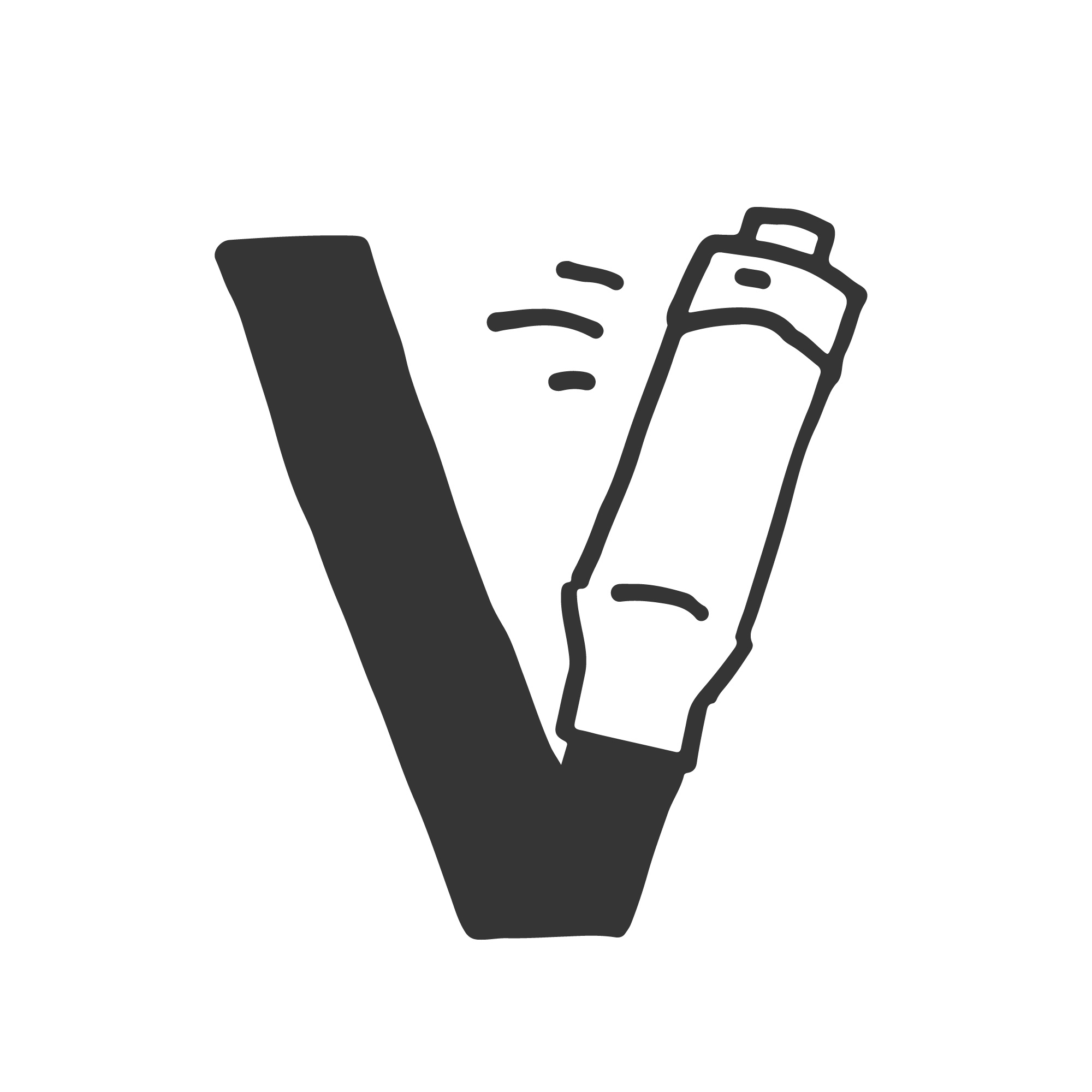I read books to both broaden and deepen my understanding of the world. (I’m guessing that’s at least part of the reason why you read too.) In some ways that’s true both with the fiction and non-fiction that I read, but here I’d like to focus in on non-fiction and explore a simple but effective note-taking technique.
Read It & Forget It
One frustration that I’ve felt in the past regarding my reading habits is how quickly I’d forget about the ideas from books that I really enjoyed. They might stay fresh for a few weeks, but it was surprising to see how quickly both the big ideas and the details floated away.
That’s precisely why I was so pulled into the world of visual note-taking when I first heard about it, because of how valuable it can be to sketch out ideas as you’re learning them. There’s a lot of good science to support working more visually with ideas, and I’m always on the look out for how to create specific visual note-taking approaches to different situations.
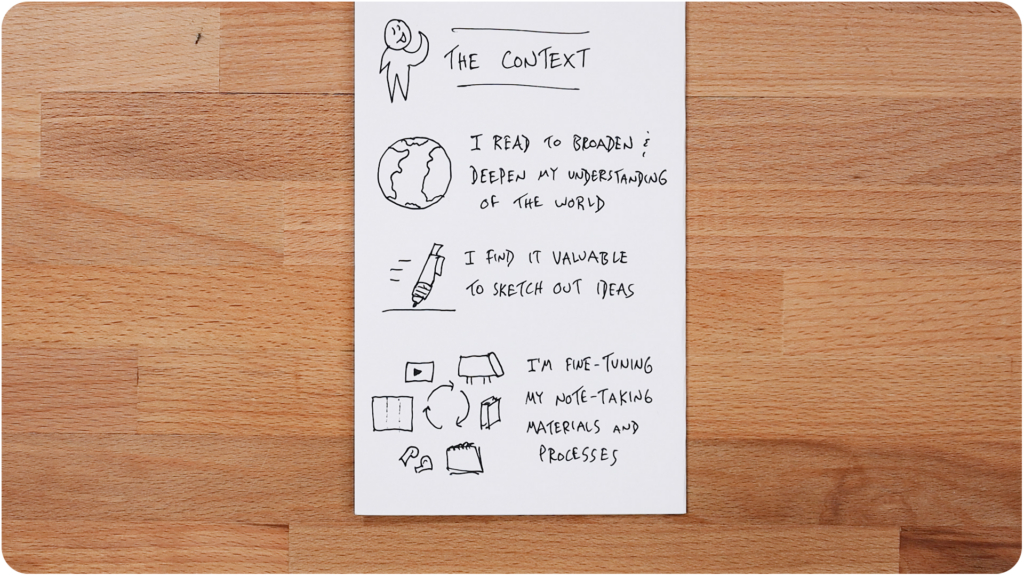
As I consider the types of media that I enjoy consuming and the types of note-taking materials that I enjoy working with, I’m fine tuning how those two pieces fit together. I want to come up with a combination of source material, note-taking tools, and visual note-taking process that results in a good flow.
My previous process for sketchnoting a book started with just reading, underlining key passages, and sometimes making notes in the margins. I would do that the whole way through the book and then come back to the beginning with a sketchbook in front of me, revisit those underlines and margin notes, and make them more visual. I’d sketch out the key takeaways in order to help me apply those ideas to my life.
That process worked well enough, but I found that there was a pretty big gap between finishing a book and taking that next step of visualizing it. I was often more eager to move on to the next book then spend time revisiting what I already read. For that reason I’ve got a pile of books that I have read and underlined, but done nothing else. I haven’t taken that next step of synthesizing those highlights. And for that reason, they’ve floated away.
So here’s what I’ve been experimenting with lately: what if I abandoned underling and instead took visual notes right as I was reading, in a trifold bookmark that was always close at hand?
How would going straight to something more visual and more personalized affect my reading habits and the ability to remember what I’ve read?
The Basics of Bookmark Note-Taking
I’ve been reading The Changing World Order by Ray Dalio, which contains plenty of complex ideas, and is making for a great case study in bookmark note-taking.
Here’s what that is looking like so far.
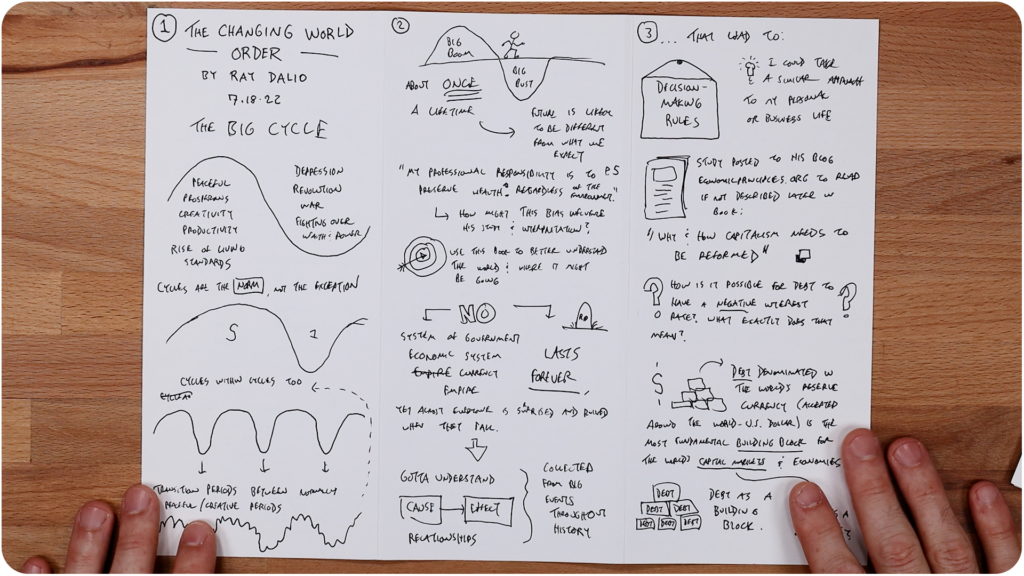
The nice thing about folding the paper into three sections is that it forces me into a single-column, top-to-bottom approach. When it comes to sketchnoting I often talk about constraints. What bounds do you put on the note-taking process to conquer the fear of the blank page?
One helpful limitation can be forcing yourself into a particular flow, in this case top-to-bottom as you move across narrow columns. As you move down you can bounce between rough sketches, helpful phrases, and perhaps a diagram here and there as you’re taking in and processing new ideas.
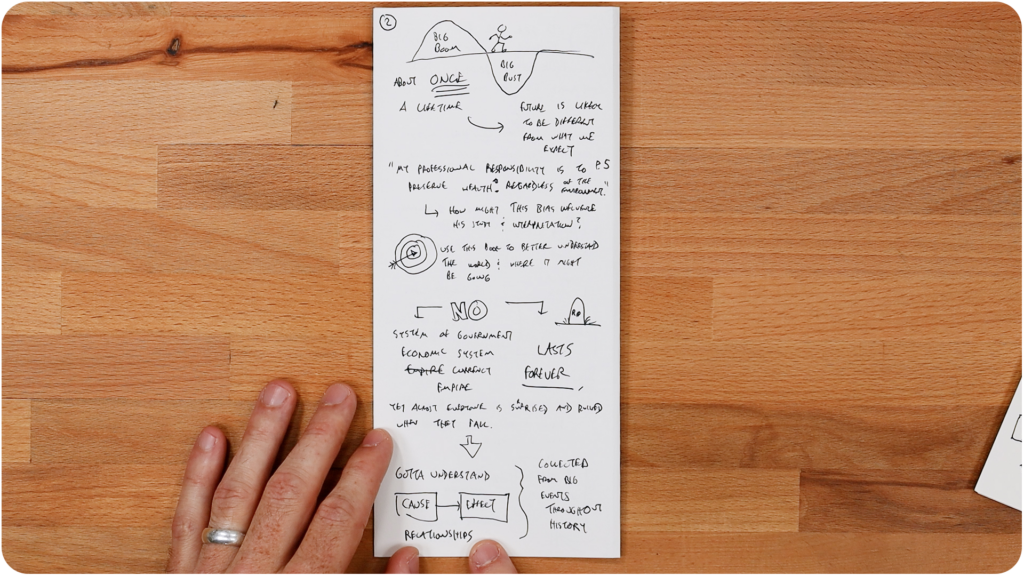
I consider these to be my first stage of visual notes. I’m not worried about making them pretty, I’m not worried about capturing them in a way that’s particularly shareable. That stage will come next if I decide to make a video about any of these particular ideas.
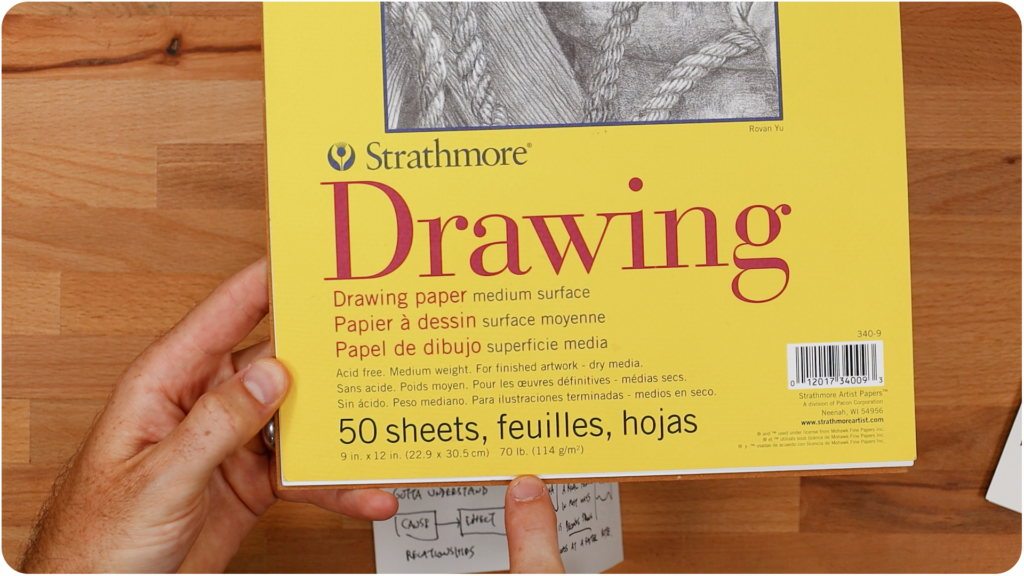
I use both pages, so in the end you get six columns out of any individual sheet of paper. I’m using 9-by-12 inch paper of medium weight, 70 pounds. You could use standard copy paper, but I think getting something a little bit thicker will keep it durable as you’re folding it in all directions and easier to use both sides of the page.
Since this also plays the role of sketchnoting practice, I have the opportunity to draw new things, like the U.S. dollar on fire for example.
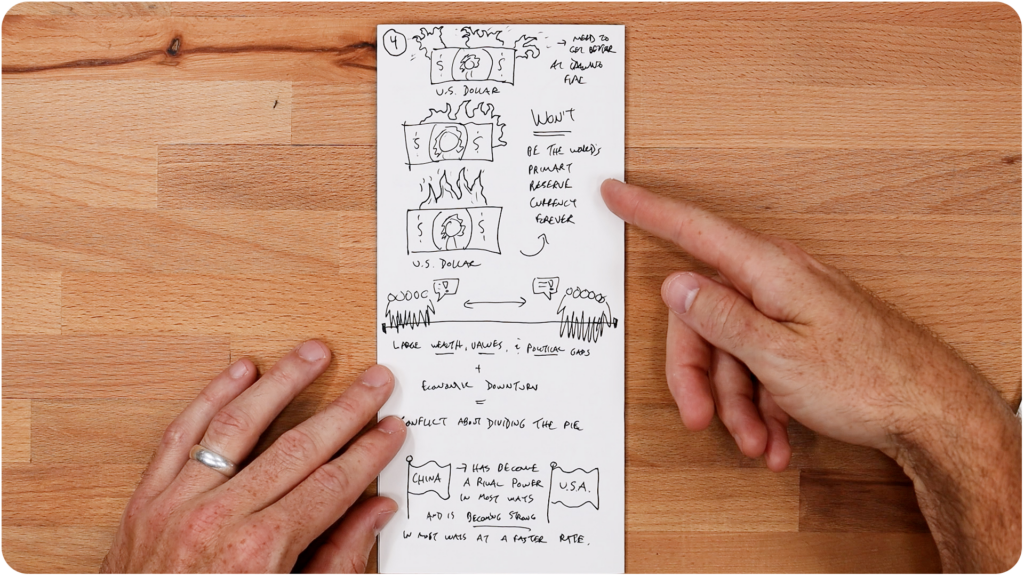
One benefit here of taking notes in this format, right within the book itself, is that you always have your note-taking materials with you. Just add this little pen holder that sticks on the front of your book and you’re good to go.
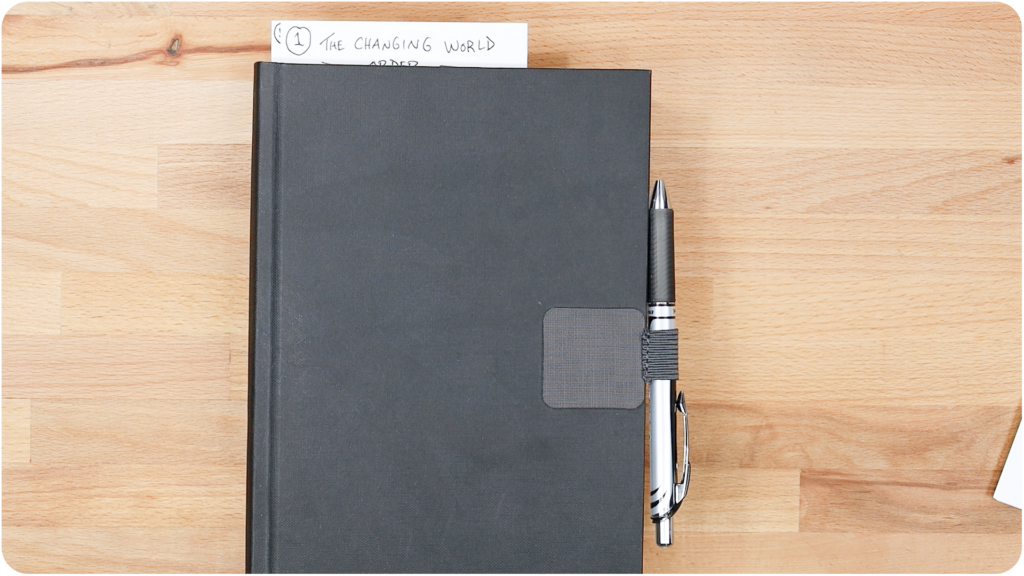
I usually keep a spare trifold in the back of the book in case I fill the current one. As I’m reading I don’t even need a working surface, I can just use the page opposite the one I’m reading. That gives me flexibility in terms of where I’m doing this reading and processing.
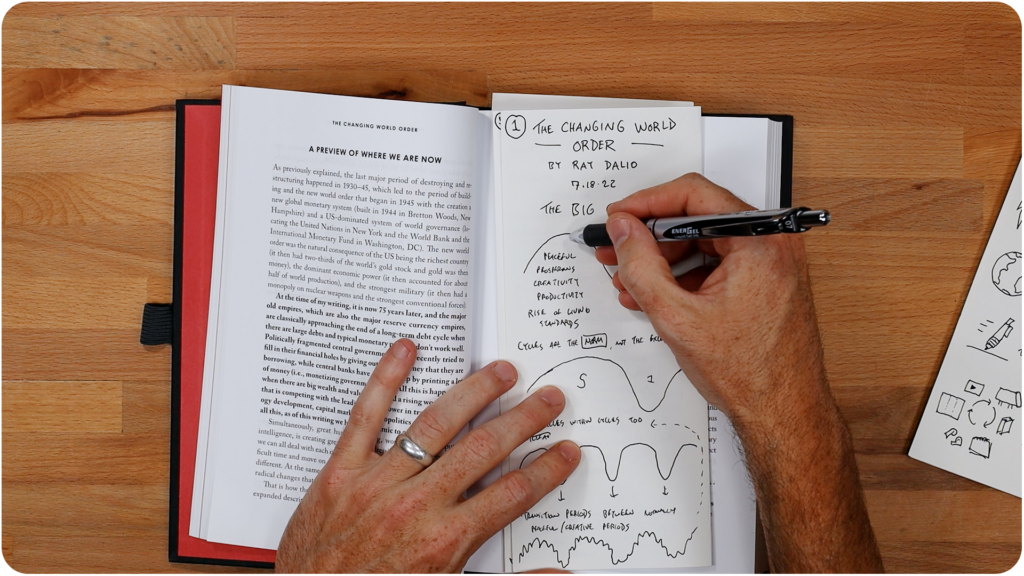
Another benefit of your bookmark being your note-taking surface is that, say you go a few days or even a few weeks between reading sessions, you can take a quick scan of your most recent notes to remind yourself of what you just read about. I think that deepens the reading experience because you’re actively working with these ideas as you go, and you have these quick references anytime you come to start a new chapter.
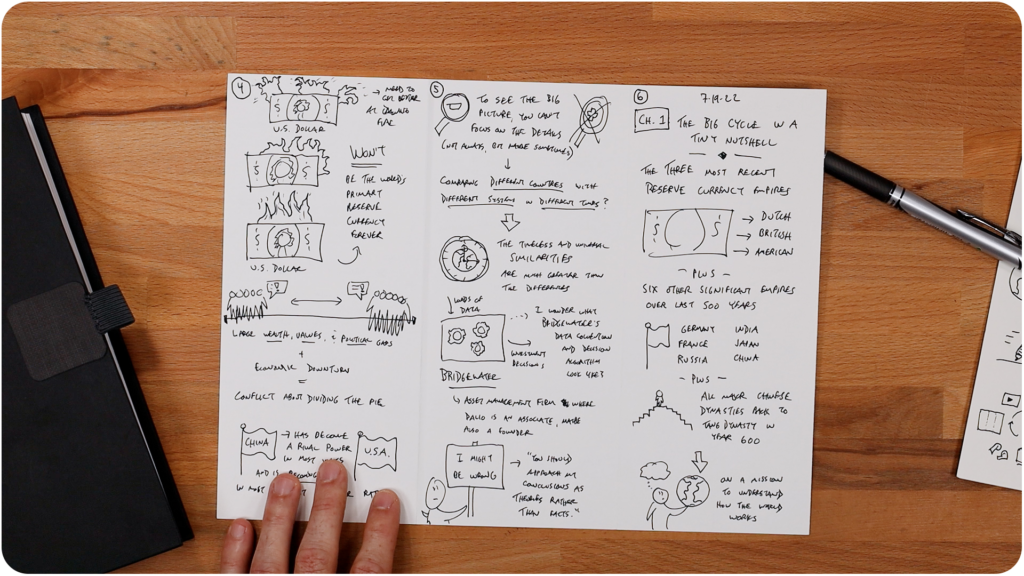
Once I have filled both sides of a bookmark, I just take a photograph of each side and store those in Notion so that I have those notes easily available on my phone, for quick review prior to a new reading session.
This is still a relatively new process for me so I’m continuing to experiment with it, but I’ve already seen some pros and some cons that I’ll highlight for you, starting with the pros.
The Pros of Bookmark Note-Taking
This type of active note-taking during the reading process leads to a better understanding of what you’re taking in (quite a bit better than just highlighting or underlining, in my opinion).
I also find that because I’m taking the time to pause, think about the ideas, sketch them out, and write some things down, I’m making more connections to other things I’ve read about, other experiences that I have had. I give myself time to explore any tangents that come up when whatever I’m reading sparks some new idea related to my life or my work.
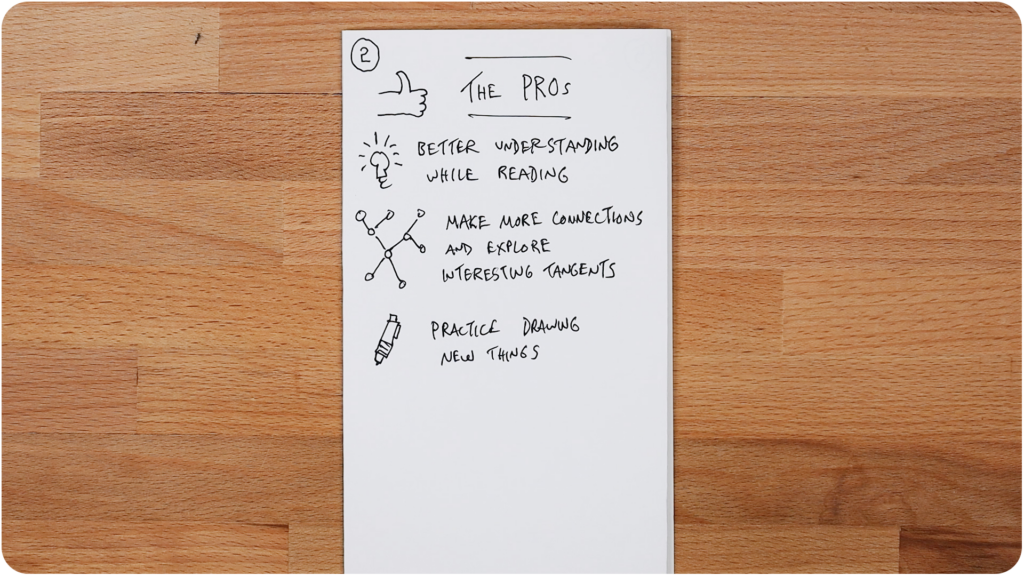
I also appreciate that these bookmarks give me the opportunity to practice drawing new things, like that U.S. dollar on fire. That’s where it’s important to approach these bookmark notes not from the perspective of wanting to create some piece of art to share with people. It’s more your own personal processing tool.
For me it’s just about equal parts processing the ideas that I’m learning from the book and experimenting with new sketchnoting techniques. I really like that you’re getting at both of those pieces at the same time.
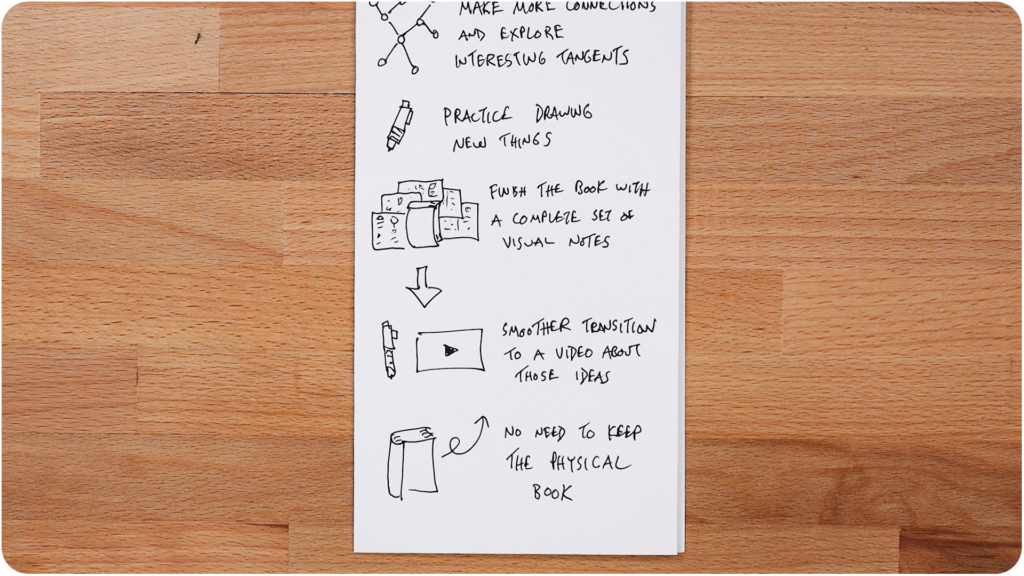
Finally, by taking notes in this way throughout the reading process, when I finish the book I’ll have a complete set of visual notes. That barrier that I faced in the past of taking an underlined book and then revisiting all of those underlines to take visual notes – that barrier will be gone.
Sometimes, that’s where the process will end for a book. I will be happy with what I captured and those notes will be the only reference that I need.
In many cases, though, I will want to highlight at least some of those ideas in a video for the YouTube channel, and that collection of rough visual notes that I took while reading will make for a much smoother transition to a video about those ideas.
Since I’ve got that collection of visual notes, and I haven’t done any underlining or margin note-taking, there’s no need to keep the physical book if I don’t want to. As much as I love having a full bookshelf behind me and am enticed by the idea of one day having a library room in my home, I’m also trying to not become too attached to physical objects, and to not let my living space become too cluttered.
So I like that with this process I can pass on the book that I just read to a future reader who can explore all those interesting ideas for themself.
Finally, let’s talk about the negatives.
The Cons of Bookmark Note-Taking
So far there are just two cons to this process that have cropped up.
As I’m sure you can imagine, my reading pace has gone down quite a bit because I’m taking the time to pause and think and sketch and write. The hope, of course, is that the trade-off will be worth it. It will take me longer to read a book, but I’ll get more out of the experience because of the way that I’m engaging with the ideas. Then I also have more that I can do after I’ve read because of that visual processing that I’ve already done.
The second con has the potential to have a larger impact.
Since the reading process is more energy intensive now (compared to underlining), I have noticed more resistance to picking up the book in the first place. The overall experience is a little bit more intellectually and creatively demanding, which does feel really good after-the-fact, but has an initial barrier associated with it.
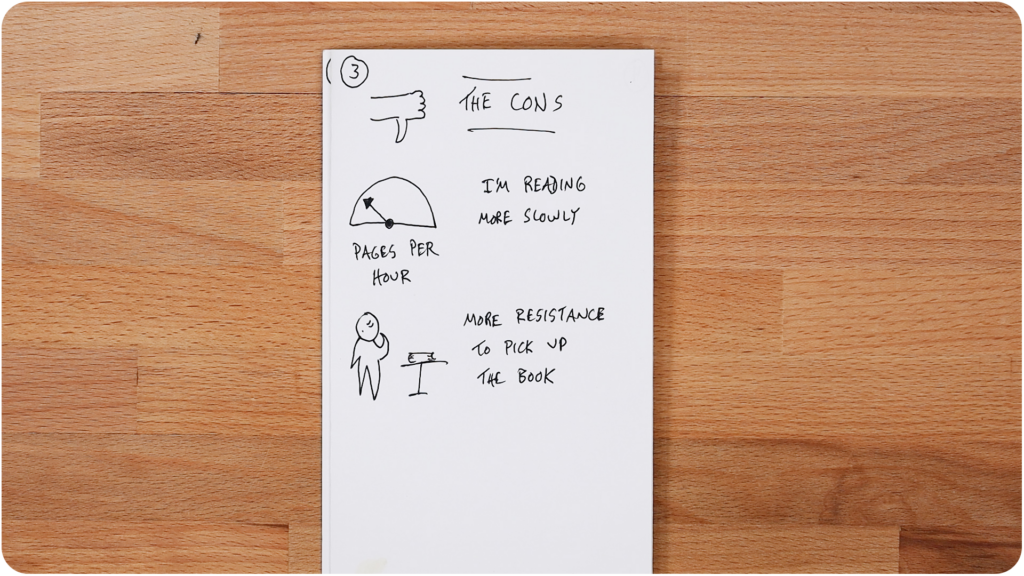
So one of the questions that I’m exploring is whether or not that resistance is easier to overcome than the barrier that I talked about when completing a book having underlined all of it and then having to go through the process of visualizing it.
I think that the current barrier is one that I can overcome.
It’s possible that other pros and cons might will themselves known as I get more experience with this approach to taking notes. If that happens I will be sure to make a follow-up to the video and post that I’ve shared here.
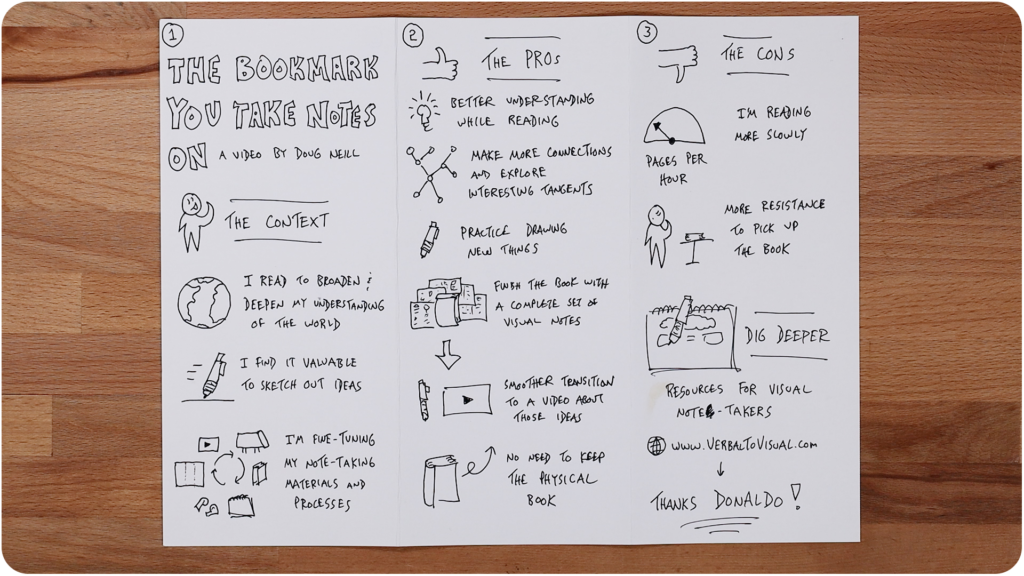
I hope it was interesting to take a look at this process and that it sparked some ideas for you. If you would like to be a little bit more active while reading, and this dynamic of having a bookmark that you can take notes on excites you, then do give it a try.
If you’d like to dig deeper into the process of taking visual notes – of sketching out ideas and not just writing them down – then come check out all of the resources that you’ll find inside of Verbal to Visual.
There you can build up your foundational visual note-taking skills and see lots of examples of different material combinations, different approaches to layout, and different styles of drawing.
It was actually within Verbal to Visual, during one of our live weekly workshops, that the idea for a bookmark that you take notes on came up. It came from a community member, so thank you so much Donaldo for bringing this idea to me! I have very much enjoyed it and benefited from it.
If you too would like to connect with other visual thinkers from around the globe, come check us out.
Thanks for reading, good luck with your own bookmark note-taking, and I look forward to sharing more ideas with you next time.
Till then,
-Doug
